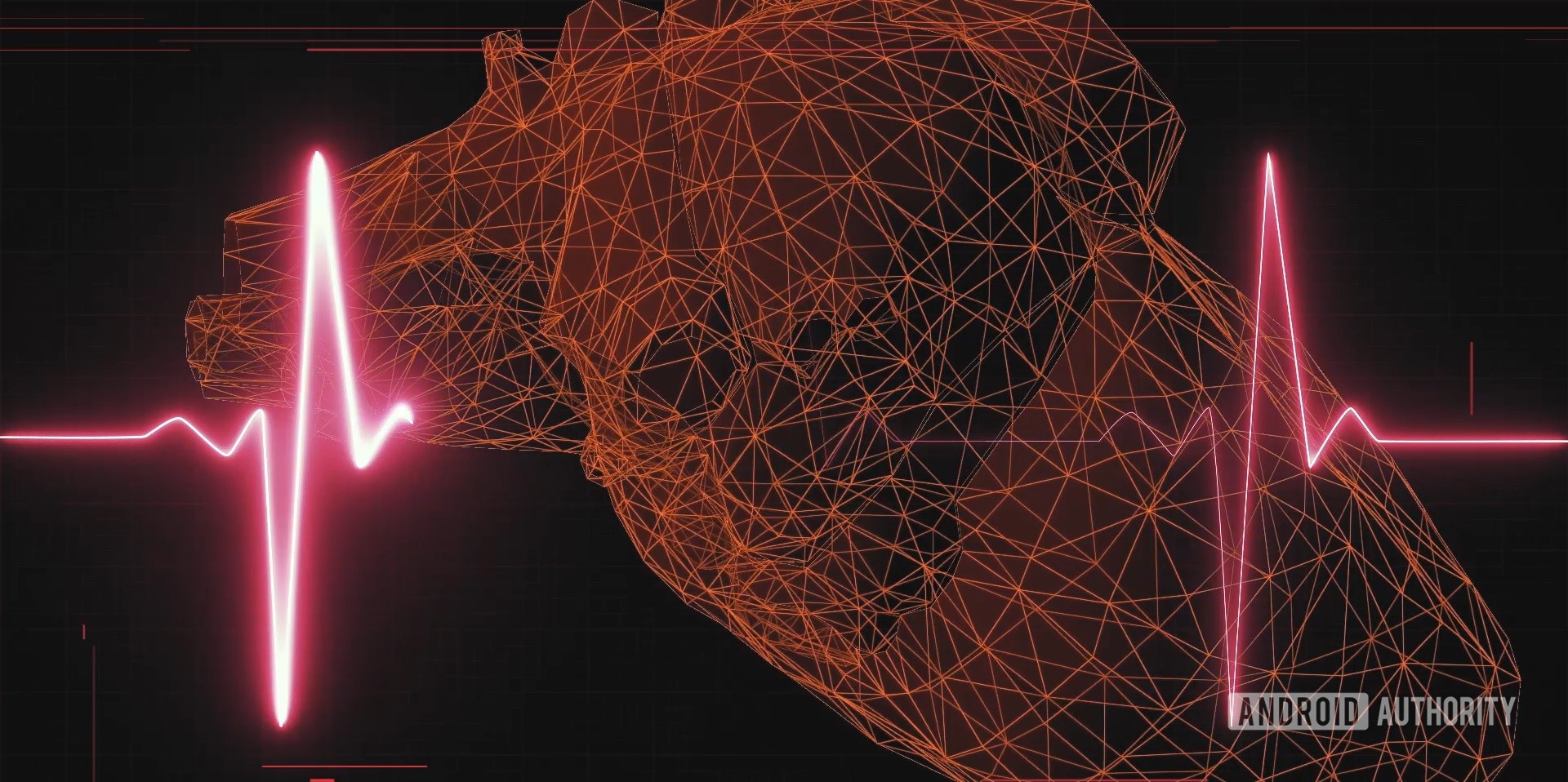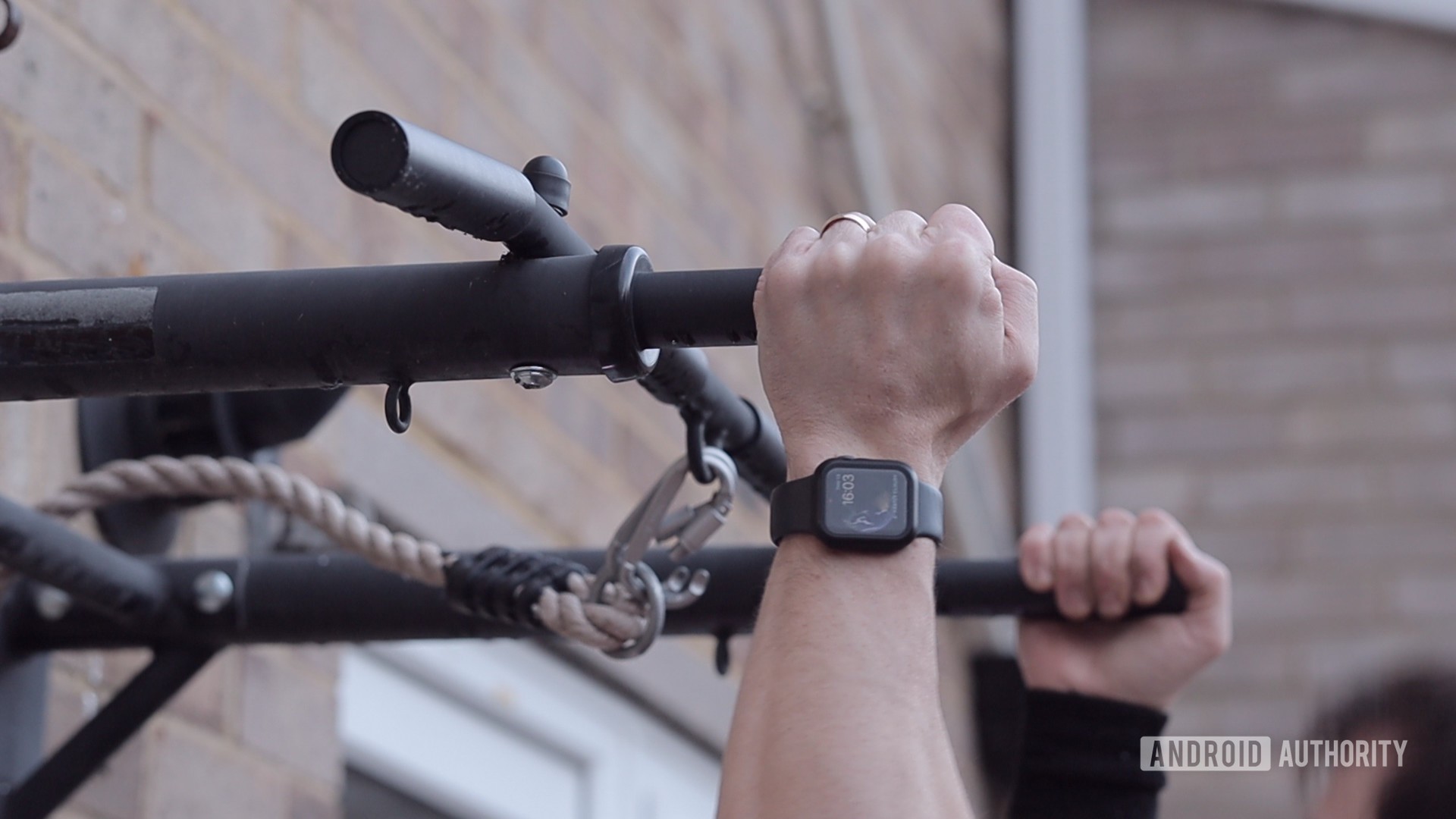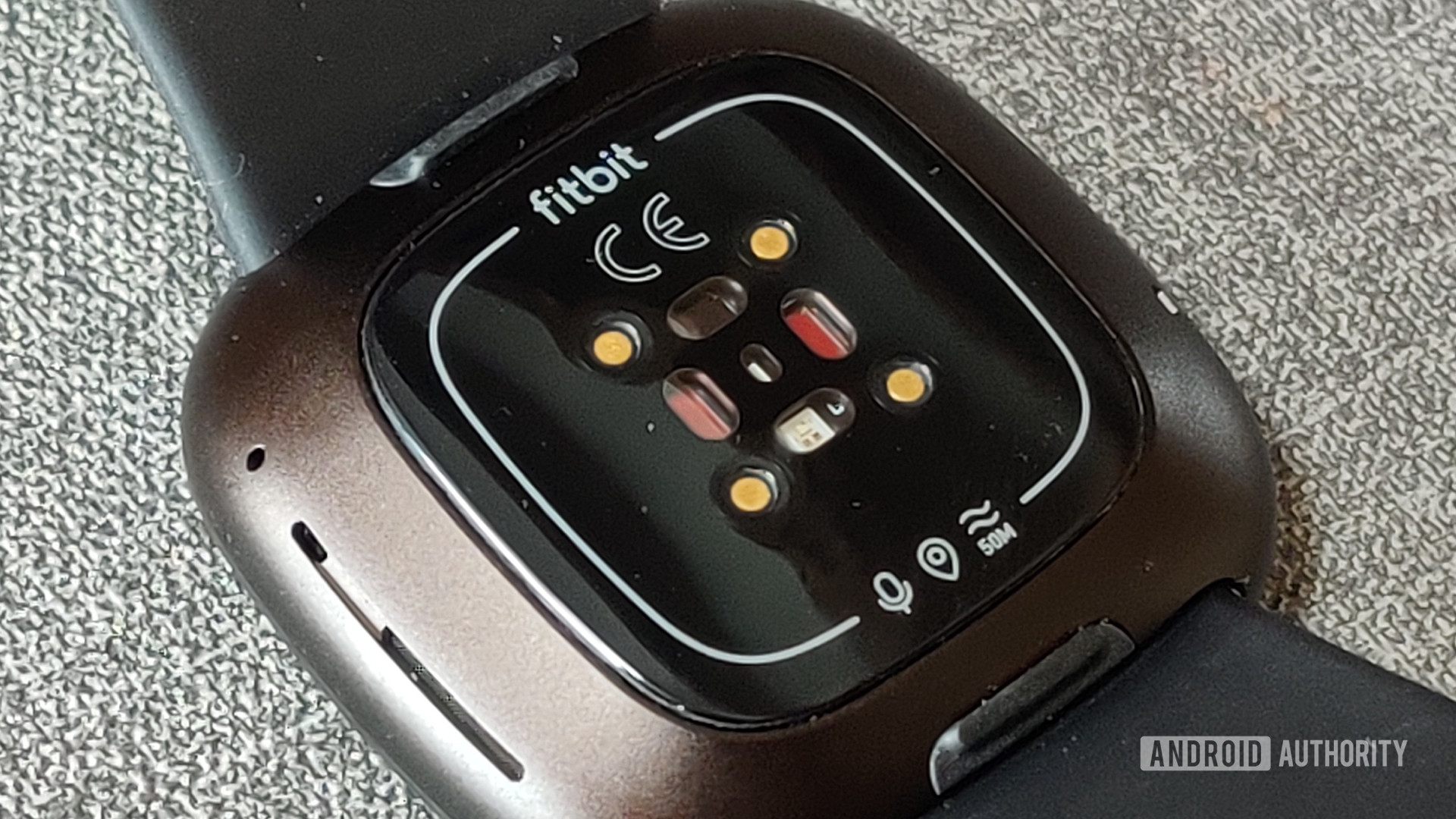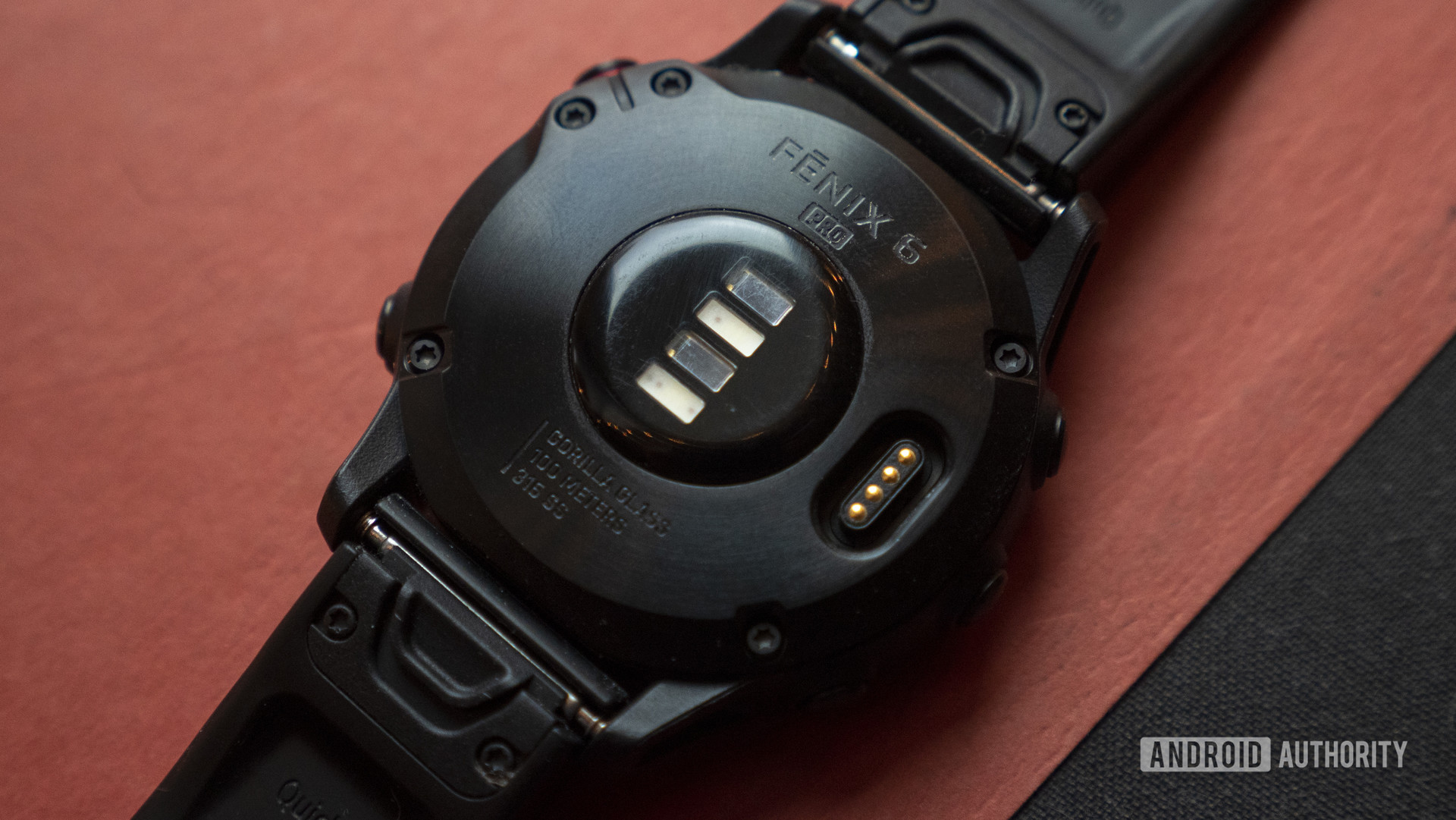Affiliate links on Android Authority may earn us a commission. Learn more.
What is heart rate variability and why does it matter?

Heart rate variability is one of the more confusing metrics tracked by fitness wearables today. However, it is also one of the most useful and important metrics for monitoring your recovery and general health. So, what is heart rate variability? Why does it matter? Read on, and all shall be revealed!
What is heart rate variability?
Heart rate variability (HRV) can be tricky to get your head around because it seems counterintuitive. We’re used to thinking that a steady heart rate is a good thing. Yet, heart rate variability seems to say the opposite. The greater your heart rate variability, the healthier you are! So, what’s going on here?
To understand heart rate variability, we first need to understand parasympathetic tone. Don’t worry. It’s not as confusing as it sounds.
Introducing: your autonomic nervous system
Your autonomic nervous system (ANS) is the part of your nervous system that controls everything that happens “automatically” (excluding reflexes and some other functions, but this generalization mostly holds true). Therefore, your ANS is in charge of things like breathing, digestion, pupillary response, urination, and heart rate.
The ANS can be further broken down into two branches. These are technically referred to as the “sympathetic nervous system” and “parasympathetic nervous system.” The easier way to remember these is “fight or flight” and “rest and digest.”
In short, your body has two modes. During a fight or flight response, your heart rate increases, your pupils dilate, your muscles contract, and you start breathing heavily. Your thoughts will race, and functions like digestion and immune response will be somewhat suppressed. Blood viscosity increases to improve the chances of clotting should you be injured.
See also: The best health apps for Android

Imagine you’re facing down a lion that wants to eat you in the African savanna. Your body is going to go into overdrive, preparing you to run for your life. Things like digestion are not the priority right now!
Conversely, the rest and digest state kicks in when you’re fully relaxed. This is the state we’re in after a big meal (called the “postprandial state”) and following a good workout. Bodybuilders refer to this state as anabolic.
Imagine you’re facing down a lion that wants to eat you in the African savanna. Your body is going to go into overdrive.
During the rest and digest state, the parasympathetic nervous system is in charge. That means you can focus on relaxing, repairing tissue, refueling muscle, and absorbing nutrients. Muscle tone relaxes, thoughts stop racing, and your heart rate calms back down.
What does all this have to do with heart rate variability?

The key thing to understand is that these two states are not mutually exclusive binaries. We don’t “switch” between two contrasting states like flicking a light switch. Instead, we are always somewhere on a spectrum. The precise amount of parasympathetic or sympathetic dominance fluctuates constantly.
The precise amount of parasympathetic or sympathetic dominance fluctuates constantly.
We become more sympathetic when we see light, for example. Conversely, we become more parasympathetic when it is warm. And we become more sympathetic when our phone rings.
Crucially, we become slightly more sympathetic when we breathe in. Each inward breath increases our heart rate to supply the muscles with more oxygen. When we breathe out, a parasympathetic response occurs, and our heart rate slightly decreases. The extent to which this happens depends on the countless other factors also affecting our sympathetic tone. So, if you’re highly stressed, breathing out will only slightly lower your resting heart rate.
High heart rate variability means your heart rate is increasing and decreasing more with each in-breath and out-breath. This, in turn, suggests you aren’t extremely stressed, which would keep you in a parasympathetic state. Thus: more variability = balance.
HRV, recovery, and overtraining

One of the main reasons that your smartwatch measures your HRV is to indicate recovery levels.
The process of recovery is actually a stressor on the body. This is why our heart rate goes up when we’re inebriated, despite alcohol being a depressant. The same goes for being overly tired (many of the symptoms of lack of sleep are actually just examples of the fight or flight response), being ill, or being burned out.
If you train again before you are ready, you'll be piling damage on top of damage.
If you train again before you are ready, you’ll be piling damage on top of damage. This is what can eventually lead to “overtraining.” As your immune system spends more and more time in a suppressed state, you are increasingly likely to get sick.
Therefore, the ideal way to train is to wait for your heart rate variability to return to normal before heading back into the gym. That’s why a lot of fitness trackers now show the metric in their respective apps. Others obfuscate this data and provide a more general “readiness score,” but it’s all the same thing.
Remember: everything from your current stress level to that mug of coffee (aka stress in a cup) can acutely impact your heart rate variability. Therefore, the most reliable way to measure this is by taking an average throughout the day or, better yet, recording it first thing in the morning. If you want the most useful HRV data, then be sure to wear your fitness tracker overnight.
How to track heart rate variability

If you’re interested in tracking your HRV, where do you start? These days, many fitness trackers will measure HRV. Some examples include several Fitbits, the Oura Ring 2, and the Apple Watch. They rely on a technology called photoplethysmography (PPG). When considering your next fitness tracker, this is something to look out for. Keep in mind that none of these methods are perfect, however. If you want a more accurate reading, you’ll need to use an electrocardiogram (ECG).
Related: Withings ScanWatch review | Fitbit Sense review
Most trackers will give you an indication of whether your HRV is good or something to worry about. Generally, 0-50ms is considered unhealthy, 50-100ms is considered “compromised,” and 100+ms is considered healthy. However, this is highly personal.
If you don’t have access to a device that can measure your heart rate variability, a useful alternative is to measure your grip strength first thing in the morning. This is an indicator of testosterone: cortisol ratios in your bloodstream, which provide a similar insight into recovery. The weaker your grip, the easier you should go on yourself that day.
Other implications of heart rate variability
HRV is a fascinating topic that is connected to many other aspects of performance. While the above should provide a basic understanding of HRV, it’s not actually as straightforward as all that.
For example, the highest performing Olympic athletes and special operations personnel actually demonstrate lower HRV during extreme stressors and high-stakes maneuvers. This is referred to as a “metronomic heart rate.” Those same individuals also exhibit a greater parasympathetic response when they are recovering from training. They can, in other words, change more quickly between a highly aroused state and a highly rested state.
See also: The best running watches you can buy
This all relates to another concept called coherence. It describes the variability as being steady and predictable or changeable and erratic. In other words, how often the dip and peak occur. Variability is tied closely to concepts such as flow states.
Heart rate variability is also affected by such things as cardiovascular health. This should come as no surprise, given that heart strength also affects stroke volume and, therefore, heart rate. In other words: a stronger heart doesn’t need to work as hard to drive blood around your body! Heart rate variability is positively correlated with overall cardiovascular health.
Low HRV can also be a sign that you’re about to get ill or suffer from chronic stress.
Closing comments

The main thing to take away from this is — as counterintuitive as it sounds — higher heart rate variability is healthier and points to more complete recovery. Accidents and illness occur when you continue to train despite what this figure is telling you.
Accidents and illness occur when you continue to train despite what this figure is telling you.
HRV also neatly demonstrates just how interconnected all the different systems in our body are. If you notice that caffeine is giving you more heart palpitations than usual, it may be because it is compounding a lack of recovery from your last workout.
Our bodies are incredibly complex machines, but fitness trackers that look for heart rate variability give us another window into their inner workings.